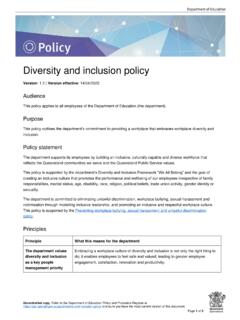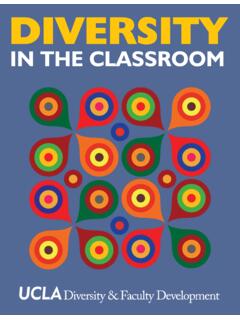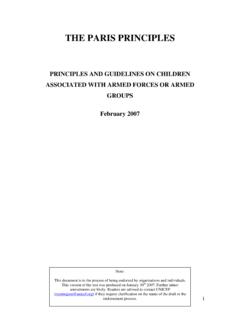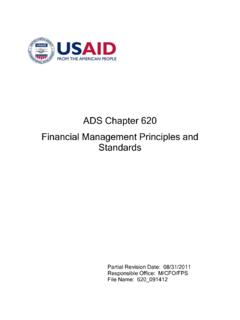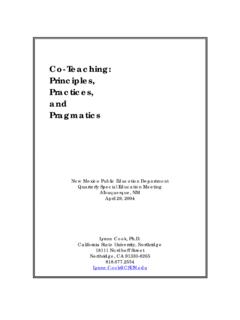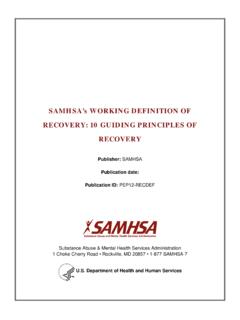Transcription of A Perspective of Inclusion: Challenges for the Future - ed
1 32 Global Education Review 1(1). A Perspective of inclusion : Challenges for the Future Maria-Luise Braunsteiner University College of Teacher Education Lower Austria Susan Mariano-Lapidus Mercy College, New York Abstract The term, inclusion , particularly in the educational setting, is still based on a deficit view. Perceptions of dis'-ability create barriers to true inclusion and are often reinforced through higher education training programs. To promote inclusive values, acceptance of individual and cultural differences must be included in all curricula, not solely within special education.
2 The Future of a truly inclusive education relies on a cultural shift that supports and nurtures differences, and views success through a lens not focused on standardization but on diversity. The Index for inclusion (The Index) has been utilized worldwide to support schools, to remove perceived barriers and to establish increasingly inclusive school cultures and practices. The Index aids in the creation of a culture that is dedicated to identifying and reducing barriers to inclusion and increases the learning and participation for all students. Keywords inclusion , inclusive education, segregation, marginalization, Index for inclusion , diversity Introduction In order to overcome the deficit view upon decision about the placement of students, which the current understanding of but rather as a school-wide philosophy inclusion is based, we must avoid dedicated to the spirit and resources needed segregation and discrimination as we meet to truly provide education for all.
3 In recent specialized educational needs. A start in this years increased efforts have been made direction is to change the language and the worldwide to educate traditionally lens through which we view inclusion . In marginalized groups. While increasing the this paper, we conceive inclusion to be the access and equality of students with migrant fundamental right of all children and adults backgrounds, cultural and linguistic to fully participate, and contribute in all _____. Corresponding Author: aspects of life and culture, without Susan Mariano-Lapidus, Mercy College School of restriction or threat of marginalization.
4 As Education, Mercy College, 555 Broadway, Dobbs Ferry, NY 10522. an extension of this definition, inclusive Email: education must be understood then not as a Global Education Review is a publication of The School of Education at Mercy College, New York. This is an Open Access article distributed under the terms of the Creative Commons Attribution-Noncommercial Unported License, permitting all non-commercial use, distribution, and reproduction in any medium, provided the original work is properly cited. Citation: Braunsteiner, Maria-Luise & Mariano-Lapidus, Susan (2014).
5 A Perspective on inclusion : Challenges for the Future . Global Education Review, 1 (1). 32-43. A Perspective of inclusion : Challenges for the Future 33. diversity, gender based differences, students due to segregational, educational practices. with disabilities, and gay, lesbian, bisexual, Many students are not given access to the transgender and queer students as well as same learning experience or opportunities gifted students in educational settings is a as other children. Separate schools, move in the right direction, true change classrooms, or marginalization within the cannot happen without first recognizing the mainstream setting create different, and value of having such a diverse body of often less robust educational experiences, students.
6 We must dedicate ourselves to and yet the worth of these children is creating equal opportunities for all to measured by the same standardized test achieve, by deconstructing and used with every other child. How are these reconstructing our cultural and academic students expected to succeed? Heheir expectations, our educational gestalt, and by (2002) noted Interpretations of what is recognizing various forms of achievement wrong with students flow from these test and having an appreciation for what they are scores and seldom give much weight to worth.
7 Factors related to opportunity-to-learn, Currently, the educational worth of cultural differences, English language students continues to be based on outdated proficiency, bilingualism, or current standards (Robinson, 2011). Educational instructional experiences (p. 54). As systems continue to adhere to the notion evidence of this statement, the New York that the role of education is to imbue State Education Department (2013). knowledge based on classic ideals. reported that as of August 2010 only 27% of Robinson (2011) has likened the current students with disabilities in the largest four educational system in the to a factory cities graduated from high school with a with desirable output being students who regular high school diploma (44% in NYC).
8 Are successful on a standardized test. This As Connor & Ferri (2007) write, over- system is not set up to support a diverse dependence on segregated settings such as body of students to achieve equal special education classrooms put students at opportunities because it is based precisely a disadvantage. on standardizing the means by which To move inclusive educational students demonstrate their worth. With the practices forward, children must be growth of global competition, the worth of permitted equality and access in education students has been boiled down to the at all levels of schooling.
9 It is clear that the standardization of a score. High scores have promotion of an inclusive school culture become equivalent with determining who is requires that all school personnel value worthy of participation in our society. diversity and view differences as assets. This sentiment has been echoed around the Access is Essential world. For instance, the traditional Overreliance on test scores to make paradigm that has underlined and has educational placement and commencement shaped German (and Austrian) education is decisions occurs worldwide (Heheir, 2002).
10 The assumption that the homogeneity of If high scores on standardized tests are the learners in a group best facilitates individual measure of success, then marginalized learning (Sliwka, 2010, p. 209). But the shift students are at an even greater disadvantage from homogeneity (students getting the 34 Global Education Review 1(1). same treatment) and heterogeneity Future teachers must be familiar with (adjustments made to meet different needs) new forms of knowledge regarding identity to diversity (differences serving as a and difference that are based on inclusive resource for individual learning and values (Slee, 2001).)











